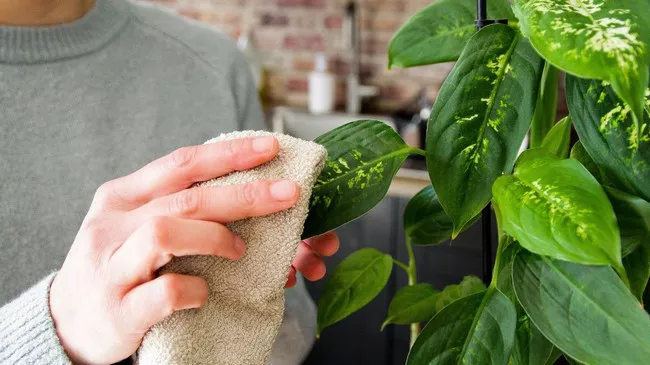Gardening is a rewarding hobby. However, it comes with its challenges. One of the biggest challenges is dealing with garden pests. Pests can damage plants, reduce yields, and ruin the beauty of your garden. This article will explore effective methods to control garden pests. We will discuss prevention, identification, and various control strategies.
Understanding Garden Pests
Garden pests are organisms that harm plants. They can be insects, animals, or diseases. Common pests include aphids, slugs, caterpillars, and rabbits. Each pest has unique behaviors and life cycles. Understanding these characteristics is crucial for effective control.
Pests can be classified into two main categories: soft-bodied and hard-bodied. Soft-bodied pests, like aphids and spider mites, feed on plant sap. Hard-bodied pests, like beetles and snails, may chew on leaves or stems. Recognizing the type of pest helps in choosing the right control method.
Preventing Garden Pests
Prevention is the first step in pest control. A healthy garden is less susceptible to pests. Here are some effective prevention strategies:
1. Healthy Soil
Healthy soil is the foundation of a successful garden. Use organic matter, like compost, to enrich the soil. This improves plant health and resilience. Healthy plants are better able to resist pests and diseases.
2. Companion Planting
Companion planting involves growing different plants together for mutual benefits. Certain plants repel pests or attract beneficial insects. For example, marigolds can deter aphids, while basil attracts pollinators. Research companion planting strategies that suit your garden.
3. Crop Rotation
Crop rotation involves changing the location of plants each season. This disrupts pest life cycles. For example, if you grow tomatoes in one area this year, plant beans in that spot next year. This practice reduces pest populations and improves soil health.
4. Proper Watering
Overwatering or underwatering can weaken plants. Stressed plants are more vulnerable to pests. Water deeply but infrequently to encourage strong root growth. Aim for consistent moisture levels, especially during dry spells.
Identifying Garden Pests
Identifying pests early is crucial for effective control. Regularly inspect your plants for signs of pest damage. Here are some common signs to look for:
1. Visible Damage
Look for holes in leaves, wilting, or discolored areas. These symptoms often indicate pest activity. For example, caterpillars may chew large holes in leaves, while aphids cause yellowing.
2. Sticky Residue
If you notice a sticky substance on leaves or surfaces, it could be honeydew, a secretion from aphids or scale insects. This residue can attract ants and lead to fungal growth.
3. Webbing
Spider mites create fine webbing on plants. This is a sign of infestation. If you see webbing, check for small, moving dots on the leaves.
4. Presence of Insects
Regularly inspect your plants for insects. Look on the undersides of leaves and along stems. Use a magnifying glass if necessary to identify small pests.
Control Strategies for Garden Pests
Once you have identified pests, you can choose a control method. Here are some effective strategies:
1. Manual Removal
For small infestations, manual removal is effective. Handpick pests like caterpillars or slugs and dispose of them. Use a soft brush to remove aphids from leaves. This method is labor-intensive but safe for the environment.
2. Barriers
Physical barriers can protect plants from pests. Use row covers to shield seedlings from insects. Copper tape can deter slugs and snails. Ensure barriers are secure and monitor for any gaps.
3. Natural Predators
Encouraging beneficial insects can help control pest populations. Ladybugs, lacewings, and predatory wasps feed on common garden pests. Plant flowers like daisies or yarrow to attract these beneficial insects.
4. Insecticidal Soaps
Insecticidal soaps are effective against soft-bodied pests like aphids and spider mites. They work by suffocating the insects. Spray the solution directly on the pests, covering all surfaces. Follow the instructions carefully to avoid harming beneficial insects.
5. Neem Oil
Neem oil is a natural pesticide derived from the neem tree. It disrupts the life cycle of many pests. Spray neem oil on affected plants, ensuring thorough coverage. It is effective against aphids, whiteflies, and mites.
6. Diatomaceous Earth
Diatomaceous earth is a fine powder made from fossilized algae. It acts as a physical barrier against soft-bodied pests. Sprinkle it around plants to deter slugs, beetles, and other pests. Be sure to reapply after rain or watering.
7. Chemical Pesticides
As a last resort, consider using chemical pesticides. These can be effective but should be used with caution. Always follow label instructions and apply them selectively. Avoid spraying during blooming periods to protect pollinators.
Integrated Pest Management(IPM)
Integrated Pest Management (IPM) combines various strategies for effective pest control. It emphasizes prevention, monitoring, and control. IPM minimizes environmental impact while managing pests. Here are key components of IPM:
1. Monitoring
Regularly check your garden for signs of pests. Use traps or sticky cards to monitor populations. Keeping records of pest activity can help inform your control strategies.
2. Thresholds
Establish action thresholds for when to intervene. Not every pest requires immediate action. Determine acceptable levels of pest damage for your plants. This approach helps prevent unnecessary treatments.
3. Prevention
Focus on preventive measures, such as healthy soil and companion planting. A proactive approach reduces the likelihood of infestations.
4. Control Methods
Use a combination of control methods. Start with the least harmful options, such as manual removal or natural predators. Use chemical pesticides only when necessary.
See also: How to Prevent Garden Pests: A Florist’s Guide
Conclusion
Controlling garden pests is essential for maintaining a healthy garden. Understanding pest types and behaviors helps in developing effective strategies. Prevention, identification, and control are key components of successful pest management.
By using a combination of methods, you can minimize pest damage while protecting beneficial insects. Regular monitoring and integrated pest management will lead to a thriving garden. With diligence and care, you can enjoy the beauty of your garden, free from the threat of pests.
Related topics:


